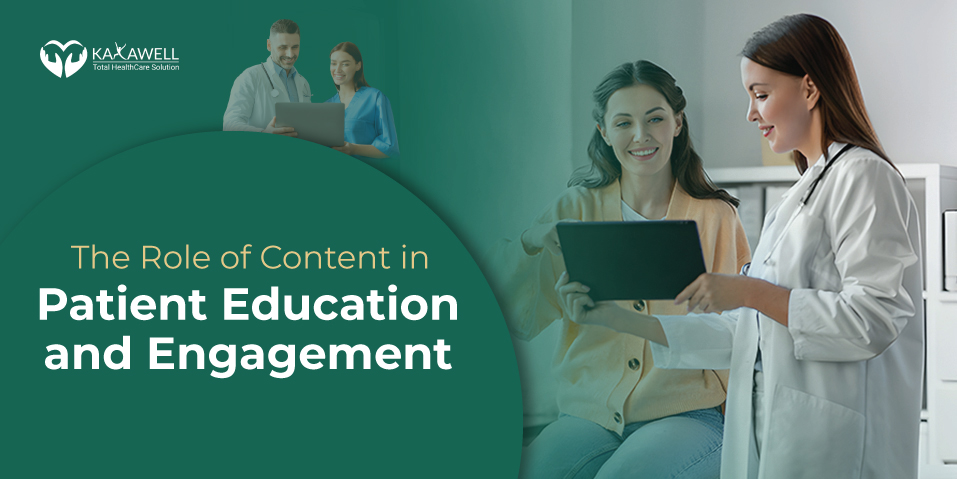The Role of Content in Patient Education and Engagement
Current healthcare practice cannot be discussed without regard to the importance of patient education and involvement. New medical knowledge accumulated with the development of the healthcare system puts a major emphasis on content as an instrument for patients’ education and participation. To appreciate, this article aims to discuss significant elements of how content assists in achieving these objectives and why it plays an imperative role in facilitating patients and clinicians alike.
Clear Information helps to Improve Understanding
To be effective in patient education, the importance of patient education lies in ensuring that the material is understandable to the patient. That is why, if medical information is presented without any further intentions and in plain language, patients are in a better position to comprehend their illnesses, cures, and management directions. The use of simple language, which in this case is the avoidance of many medical terms, can bridge the gap between complicated medical information and the patient’s understanding. For instance, designing well-written brochures, patient handouts, and digital resources that may contain instructions or any other useful information can make what needs to be communicated easily understood by the patient. In this way, providers can enhance patients’ understanding and help people decide on their own what options they would like to choose.
Key Benefits
- Please make use of videos or the concept of an interactive module that allows patients to engage with the information presented to them
- It is recommended to include charts, diagrams, and pictures to explain facts and ideas in a student-friendly manner
- The current educational materials should avoid the use of ambiguous terms and should rather use consistent terms
Supporting Self-Management and Adherence
Self-management and patient engagement are, therefore, very useful in being able to handle one’s health. Self-management aids educational Information, which is considered crucial in the management of chronic illnesses as it enables patients to follow the recommended treatment regimens from doctors. Videos, tutorials, and other forms of content that involve interactivity should be used to show how to take certain medications, what sort of diet should be taken, etc. This kind of content assists the patients to be more compliant and continue following the treatment regimens.
Promoting Health Literacy: Understanding the Importance of Patient Education
Health literacy refers to the level of knowledge, skills, and competence required to understand and apply routine health information to make proper health decisions. It can be ascertained that health IT content can play an important role in changing patient outcomes. When patients receive information in the form of text as to what certain terms mean, various medical procedures, or general health concepts, this educates the patient. Therefore, the use of features such as glossaries, infographics, FAQs sections, and social media platforms of the healthcare organizations’ digital presence helps enhance literacy. Additionally, collaborating with a social media growth service provider can help distribute this valuable content more effectively, ensuring a broader reach and promoting informed health decisions across diverse audiences.
Enhancing Patient and Doctor Interaction
Content can also improve the relationship between the patient as well as the healthcare provider in the society. Properly developed health promotion literature can become a more or less shared focus for discussion during a person’s healthcare visit. For instance, those who have gone through the pre-appointment information provided are likely to ask questions and be equally involved in their treatment. Also, content that can respond to such basic patient inquiries or that gives the expectation of the treatment sessions could result in more effective communication.
Read More: Find the Best Doctors and Hospitals
Encouraging Patient Empowerment
Engagement is another crucial facet of the empowerment model for patients, and content is always essential in creating such empowered patients. Healthcare content assists patients in becoming more self-directed as the information in the content is accurate and reliable. Tools like the pathology self-assessment tool, disorder risk checker, and health plan builders encourage patients’ engagement in the care process. Therefore, it can be argued that patient-empowered patients are more likely to engage in preventive and necessary measures required to retain good health and seek medical care when the need arises. This is a belief that empowering patients through optimized content can help to enhance the quality of patient’s health and ensure that the patient is happy with the results.
Conclusion
Education and engagement of the patient also require content as part of their treatment. Thus, the availability of clear, non-technical, and contextual information makes healthcare content improve patient’s knowledge, self-management, and health literacy and empowers patients during discussions and decision-making processes. While the management of patients is advancing with time, good production of educational material will continue to play a critical role in enhancing the experiences and well-being of the patient.
